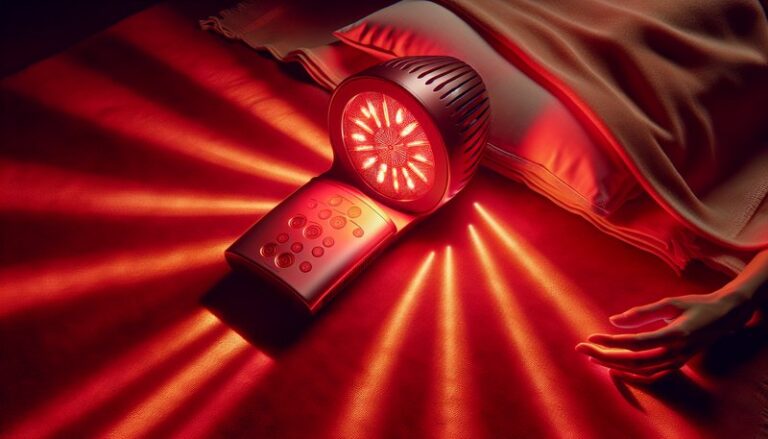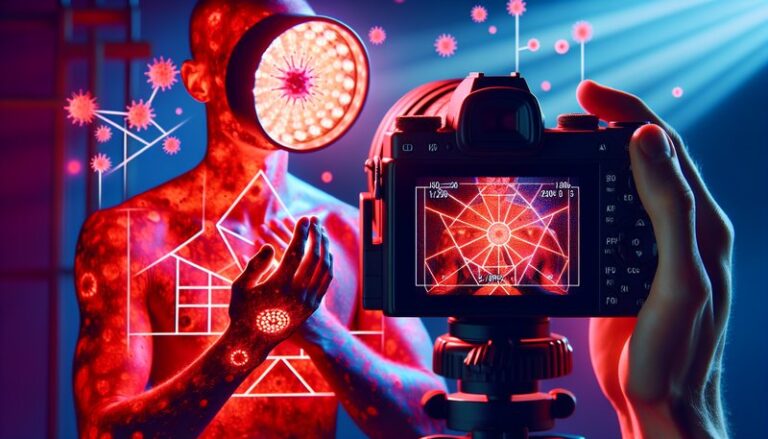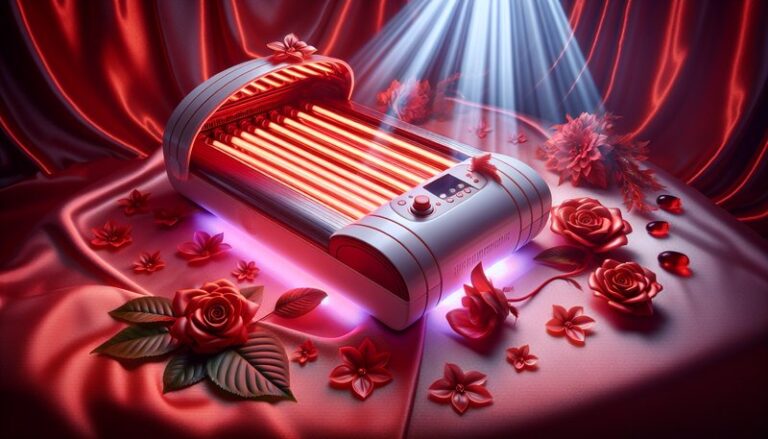Does Red Light Therapy Cause Cancer?
Could a treatment designed to promote healing and skin rejuvenation inadvertently lead to something as serious as cancer?
This article aims to explore the safety concerns surrounding red light therapy, particularly its association with cancer. We will examine the mechanism of red light therapy, its benefits, and address common misconceptions that may arise regarding its cancer risk.
Key Takeaways
- Red light therapy (RLT) harnesses low-level wavelengths of light to promote healing and reduce inflammation.
- Current research indicates that RLT does not cause cancer; instead, it may offer protective benefits against cellular damage.
- Understanding the risks and precautions related to RLT can help patients make informed decisions about its use.
What is Red Light Therapy?
Red light therapy is a non-invasive treatment that uses specific wavelengths of light, typically in the red to near-infrared spectrum (620 to 750 nanometers), to penetrate the skin. It stimulates cellular activity, promotes healing, and reduces pain and inflammation.
The mechanism involves absorption of light by mitochondrial chromophores in cells, enhancing ATP (adenosine triphosphate) production, which is essential for cellular energy and function. As a result, red light therapy is commonly used in dermatology, physical therapy, and aesthetic treatments.
What are the Benefits of Red Light Therapy?
Red light therapy offers a broad range of benefits. The following points explore these advantages in detail.
Skin Health Improvement
Red light therapy is known to enhance collagen production and improve skin elasticity. Studies have shown that it can lead to reduced wrinkles and improved skin tone. A notable example is its use in treating acne and scarring, with many patients reporting significant improvements after several sessions.
Pain Reduction and Inflammation Control
This therapy is effective in managing chronic pain conditions, such as arthritis. The light penetrates deeply, reducing inflammation and promoting tissue repair. Research indicates that patients with joint pain experience significant relief after regular RLT sessions, enhancing their quality of life.
Enhanced Muscle Recovery
Athletes often utilize red light therapy to accelerate muscle recovery following strenuous workouts. By promoting blood flow and reducing inflammation, RLT can lead to quicker healing and improved performance. Some studies suggest that it can also decrease the severity of muscle soreness.
Potential Mood Enhancements
Emerging research points to the potential benefits of red light therapy in improving mood and reducing symptoms of depression. The calming effects of RLT have sparked interest in its use as an alternative treatment for seasonal affective disorder (SAD) and other mood disorders.
Is it Possible to Develop Cancer from Red Light Therapy?
The possibility of developing cancer as a result of red light therapy is a common concern. However, scientific evidence suggests that RLT does not increase cancer risk but may have the opposite effect by protecting against cellular damage.
What are the Advantages of RLT in Cancer Prevention?
Red light therapy may actually contribute to cancer prevention. By enhancing ATP production, RLT encourages healthy cell function and may assist in repairing DNA damage caused by other stressors, such as UV exposure. This cellular support can contribute to a stronger immune system, necessary in the fight against cancer.
What are the Disadvantages of RLT?
While red light therapy is generally considered safe, there are some disadvantages to consider. Overexposure can lead to skin irritation, and the efficacy of treatment can vary greatly depending on individual conditions and the specific device used. Additionally, RLT should not replace conventional cancer treatments for those diagnosed.
What are the Things to Consider Before Using Red Light Therapy?
Before starting red light therapy, it’s important to consider several factors to ensure a safe and effective experience.
Consultation with a Healthcare Provider
It’s advisable to discuss RLT with a healthcare provider, especially for individuals with existing health conditions or those undergoing cancer treatment. A professional can provide guidance tailored to specific health needs.
Discover the insights in Does RLT damage eyes?
Device Quality and Accreditation
Not all red light therapy devices are created equal. When choosing a device, look for reputable brands that meet safety standards. Accredited clinics that use FDA-approved equipment often provide the best results.
Individual Skin Sensitivity
Personal skin sensitivity should be taken into account. Some individuals may experience irritation or adverse reactions. It’s important to start with shorter sessions and gradually increase exposure if no negative effects are felt.
What are the Alternatives to Red Light Therapy?
For those considering alternatives to red light therapy, there are several options to explore.
Laser Therapy
Laser therapy offers targeted treatment for various skin conditions. This advanced technology can penetrate deeper tissues and is effective in treating scars, wrinkles, and pigmentation issues.
Cryotherapy
Cryotherapy uses extreme cold to stimulate healing processes and reduce inflammation. It’s popular for sports recovery and has shown effectiveness in treating dermatological conditions.
Chemical Peels
Chemical peels remove the outer layer of skin to promote regeneration. This treatment is effective for enhancing skin texture and tone and can be tailored to address specific skin concerns.
Conclusion: Is it Recommended to Use Red Light Therapy?
Considering the evidence surrounding red light therapy, it appears to be a safe and effective treatment option without any indications of increasing cancer risk. Its numerous benefits for skin health, pain management, and muscle recovery make it a valuable tool. However, individuals are encouraged to consult healthcare professionals to ensure that this therapy aligns with their specific health needs.
Understand more with Eye Protection for Red Light Therapy?
Frequently Asked Questions
Can red light therapy cure skin cancer?
Red light therapy is not designed to cure skin cancer. Instead, it may support overall skin health and healing. Those with skin cancer should follow the recommendations of healthcare providers regarding appropriate treatments.
How often should I undergo red light therapy?
Frequency can vary widely based on individual needs. Common recommendations suggest 2-3 sessions per week, but consultation with a healthcare professional can tailor a plan to specific conditions.
Are there side effects to red light therapy?
While side effects are rare, some individuals may experience mild skin irritation. It’s important to follow usage instructions and consult with professionals if adverse reactions occur.
Can I use red light therapy at home?
Yes, many home devices are available, but it’s crucial to choose high-quality equipment. Always start with lower exposure times and monitor skin reactions to ensure safety.






